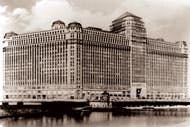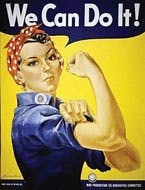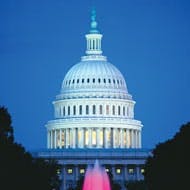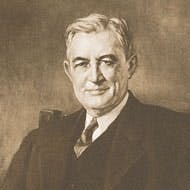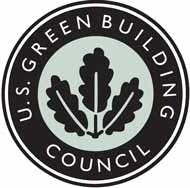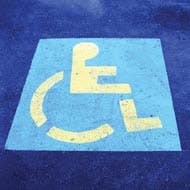100 Influences That Have Shaped the Buildings Market: Page 1
1 of 4
Buildings launches its 100th-anniversary celebration by showcasing some of the commercial and institutional buildings industry’s most momentous happenings - in no specific order - all of which have affected the “business of buildings” throughout the past century. Discover the proven processes, ideas, leaders, events, and landmarks, selected by the editorial staff.
1. Energy deregulation. From the onset of deregulation, facilities professionals began expanding their energy strategies to include more than conservation; efforts in procuring and administering energy commodities quickly gained attention.
2. Access control - from keys to cards. Keys may have been a great conductor of electricity for Benjamin Franklin, but they were a real source of frustration for facilities managers 25 years ago. With the invention of smart cards, there was no longer a need to replace locks each time the employee roster changed. These intelligent access controls can lock out individual users with a few keystrokes.
3. Sick Building Syndrome. In the 1980s, the World Health Organization identified the symptoms of sick building syndrome (headache; irritation of the eyes, nose, and throat; general fatigue; etc.). Further research by the National Institute of Occupational Safety and Health revealed the primary cause to be inadequate ventilation. Awareness about the effects of poor indoor air quality has continued to rise - evident today by the growing number of legal battles over toxic mold contamination in buildings.
4. Enclosed malls. The first enclosed mall, Southdale Center, was built south of Minneapolis in 1956 and changed shopping forever. Patrons no longer battled wind, rain, scorching heat, or snow to make their purchases. The modern mall has evolved into so much more than a retail experience. Malls today have been super-sized and offer everything from dining options to roller coasters.
5. The invention of drywall. It took some time for the 1916 United States Gypsum Co. invention of drywall to catch on, despite its use in many of the 1933-34 Chicago World’s Fair buildings. The widespread adoption of the product occurred largely as a result of the government’s need for speedy construction during World War II. The product accelerated construction because the time-consuming application and drying required for multiple layers of plaster were eliminated.
6. Six Sigma. Initially developed by Motorola in the early 1980s for use in manufacturing lines, Six Sigma (as well as Total Quality Management, Baldrige criteria, and Intl. Organization for Standardization) is now being applied to perfect facilities management. It aims to maximize productivity and efficiency by streamlining operations, improving product/service excellence, and eliminating mistakes.
8. PCs.
10. E-mail
12. The Merchandise Mart. Conceived as a model of modern, scientific efficiency in wholesale merchandising, The Merchandise Mart’s purpose was to centralize Chicago’s wholesale goods trade by consolidating its vendors and activities under one roof. At the time of its completion in 1931, the massive Mart was the largest building in the world at 4 million square feet, proving that size wasn't just about height.
14. Hospital infection control. As the healthcare industry marketed a more residential, home-like approach to the design of its facilities - including softer elements such as carpet, wallcoverings, and textiles - industry suppliers created products with antimicrobial elements to minimize the spread of communicable diseases and infections. Today, these hygienic finishes are becoming a more de facto standard in all facility types.
15. 1970s energy crisis. Yes, the cry for energy efficiency became the industry’s quest, and product suppliers stepped up their R&D efforts to produce a new line of more efficient equipment. These years also opened the doors (and minds) of some of today’s most established environmental and research leaders, including the inventors and adapters of a multitude of alternative energy sources in use today.
16. Late-1980s recession. From boom to bust in a few short years. By measures such as unemployment and public perception, the North American economy was in recession continuously for years after 1987, with only brief periods of revival. The stock market collapse in October of that year (larger than that of 1929) was handled well by the economy. However, the lumbering savings and loans were beginning to collapse, putting the savings of millions of Americans in jeopardy. Although the U.S. economy continued to grow as a whole, certain sectors of the market - particularly energy and real estate - slumped.
17. Smoking
18. Asbestos.
19. Lead paint.
20. Outsourcing.
21. The Telecommunications Act of 1996. The purpose of the Telecommunications Act of 1996 was to provide lower prices and higher-quality services through competition and reduced regulation. Unfortunately, the act fueled a debate over mandated access for telecommunication service providers (TSPs). Since the mid-1990s, industry organizations like Real Access Alliance and BOMA Intl. have spent countless hours working to protect the private property rights of building owners, one state at a time.
22. Air-conditioning. While the first “Apparatus for Treating Air” was patented by Willis Haviland Carrier in 1906, his biggest contribution to HVAC in commercial buildings came with the invention of the centrifugal chiller. Patented in 1921, this refrigeration machine offered the first practical method to cool large spaces. The invention opened the doors to widespread industry throughout the United States, including the sweltering Sunbelt.
23. The Building Owners and Managers Association (BOMA) Intl. As the industry association with the greatest longevity, BOMA Intl. has been providing building professionals with information on office building development, leasing, codes, legislation, and more since 1907. Founded as the National Association of Building Owners and Managers, the organization represents and promotes the interests of the commercial real estate industry and reports a North American membership representing a combined total of more than 9 billion square feet of commercial properties.
24. LEED®. Leadership in Energy and Environmental Design, the flagship green building rating system from the Washington, D.C.-based U.S. Green Building Council, quantified green in a measurable fashion after years of extensive (and, at the time, somewhat debated) development. Today, the LEED definition of high-performance, sustainable buildings has gone beyond new construction projects to encompass existing buildings, commercial interiors, and more. LEED certification of a building may not be the goal for every building, but many professionals are finding the system’s detailed checklists can be an important tool in adapting and upgrading their existing operational-excellence programs.
25. The Americans with Disabilities Act (ADA). When the ADA was passed by Congress in 1990, it not only protected the civil rights of disabled Americans but also altered how buildings were built and renovated. The ADA Accessibility Guidelines (ADAAG) mandate access to public places and places of accommodation. Revisions are ongoing.







